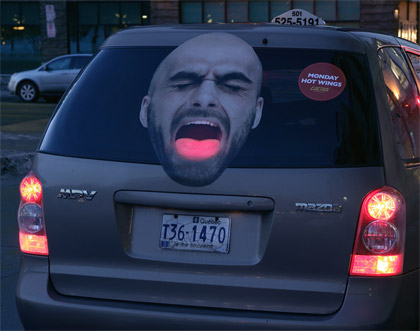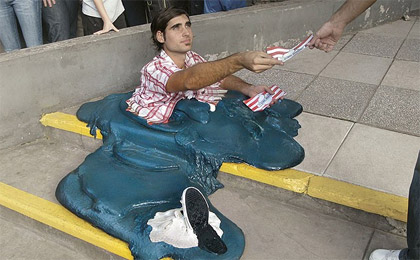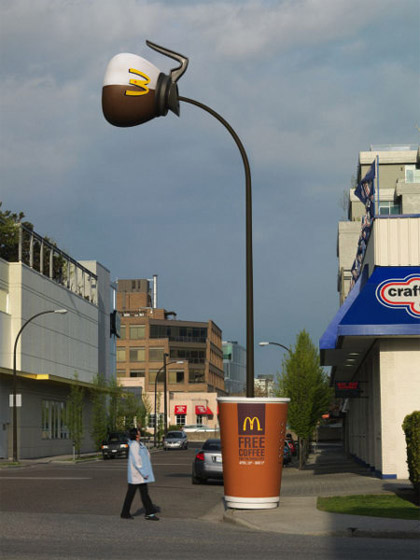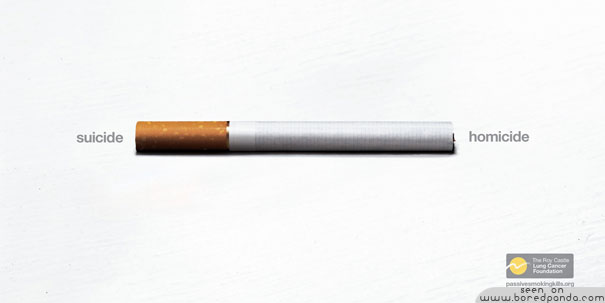Most of us have gotten the email - the super dimensional chalk drawings done on sidewalks, streets, and alley ways has virtually circled the globe a few times, and with good reason. Instead of going to Gallery owners, art brokers, and museums, this talented artist took to the streets and started putting his temporary chalk images in the center of busy civic centers and walkways, gaining permanent recognition in not only the art community, but the advertising community as well- and corporate giants are now following suit, putting branded images in unexpected places. (Thank you to redjellyfish.com for their collection of street art pics, I borrowed a few)
But there is more to be learned from street artists than just how to get your images seen, street artist are masters of "Guerrilla Marketing"- getting their opinions, messages and art to the masses without breaking the bank or utilizing tired and dated tactics. Street artists are very 'avant garde' in their approach, and the world of advertising and marketing could take a lesson or two.
The trick is to be honest and unexpected. Marketers are literally the voice of the company- and it is important that their voices are honest and passionate about the brand- because it will show in their work. Even the most passionate CEO in the world cannot save his company from the ill effects of boring and dated marketing.
Today's super savvy consumers can spot insincerity a mile away. Unexpected, unique and funny campaigns are the ones that will stick in the heads of consumers. These retailers have the right idea (I borrowed these from creativeguerrillamarketing.com's post 80 of the Best Guerrilla Marketing Idea's I've Ever Seen):
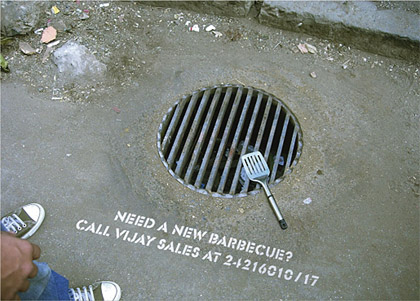
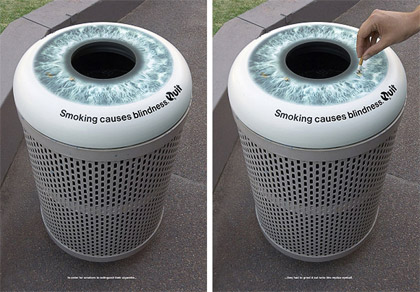
Why do these "guerrilla" tactics work so well? Consumers are plagued with constant advertisements going for the "hard sell"- buy this, come here, do this- and if they have no interest in the product or service being offered they simply ignore the message and move on with their day. The beauty of guerilla marketing is that even if your message (or sculpture or drawing or whatever you might come up with) is seen by someone who is not interested in what is being offered, odds are they will be amused or provoked about what they have encountered enough to stop and think about it for a second, maybe get them talking- or even sharing. And it is as simple as that. Once people begin sharing pictures, blog posts, and YouTube videos about your campaign, you will see it take on a life of its own. The roots of the strategy goes all the way back to word of mouth, except modern and cool. Word spreads exponentially faster due to the all convenient and ever present internet all ready equipped with all the tools needed to spread the word quickly and virally through every social network imaginable.
Empires have been built simply by knowing how to utilize this tactic in conjunction with social media to virally spread the word. For Example, Red Bull came into the Australian market in 1987 and had trouble getting their product onto the shelves of clubs and bars- because it was viewed as more of a medicinal supplement than a mixer. However after changing their strategy and marketing directly to "clubbers" and snowboarders, Red Bull exploded in popularity and now outranks Energy Drinks from soft drink giants Pepsi and Coke as the number one energy drink on the market; and they managed to do it with a fraction on the advertising budget.
We all remember the provocative and sometimes disturbing "TRUTH" ads:
But "The Blair Witch Project" is arguably the greatest Guerrilla marketing success story. The film had a mere $50,000 budget, no stars, no script and a hell of a lot of heart. They took their meager assets and leveraged them to create a huge online buzz- and $250 million in world wide profits.
It's probably worth a shot.
 |
| Banksy |
Looking for some ways to try guerrilla marketing for yourself? Check out 50 Guerrilla Marketing Tactics you should be using from bootstrappingblog.com.





